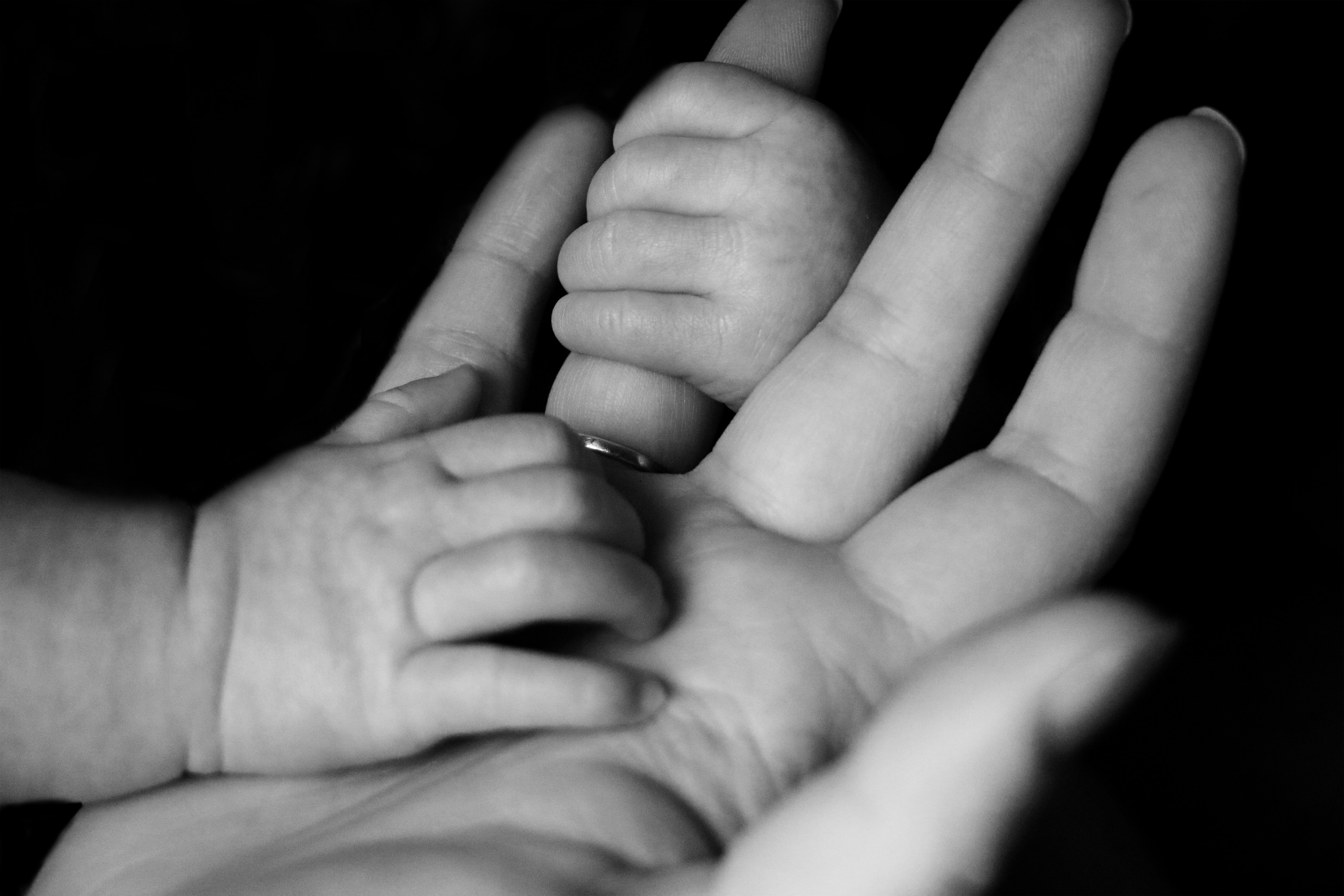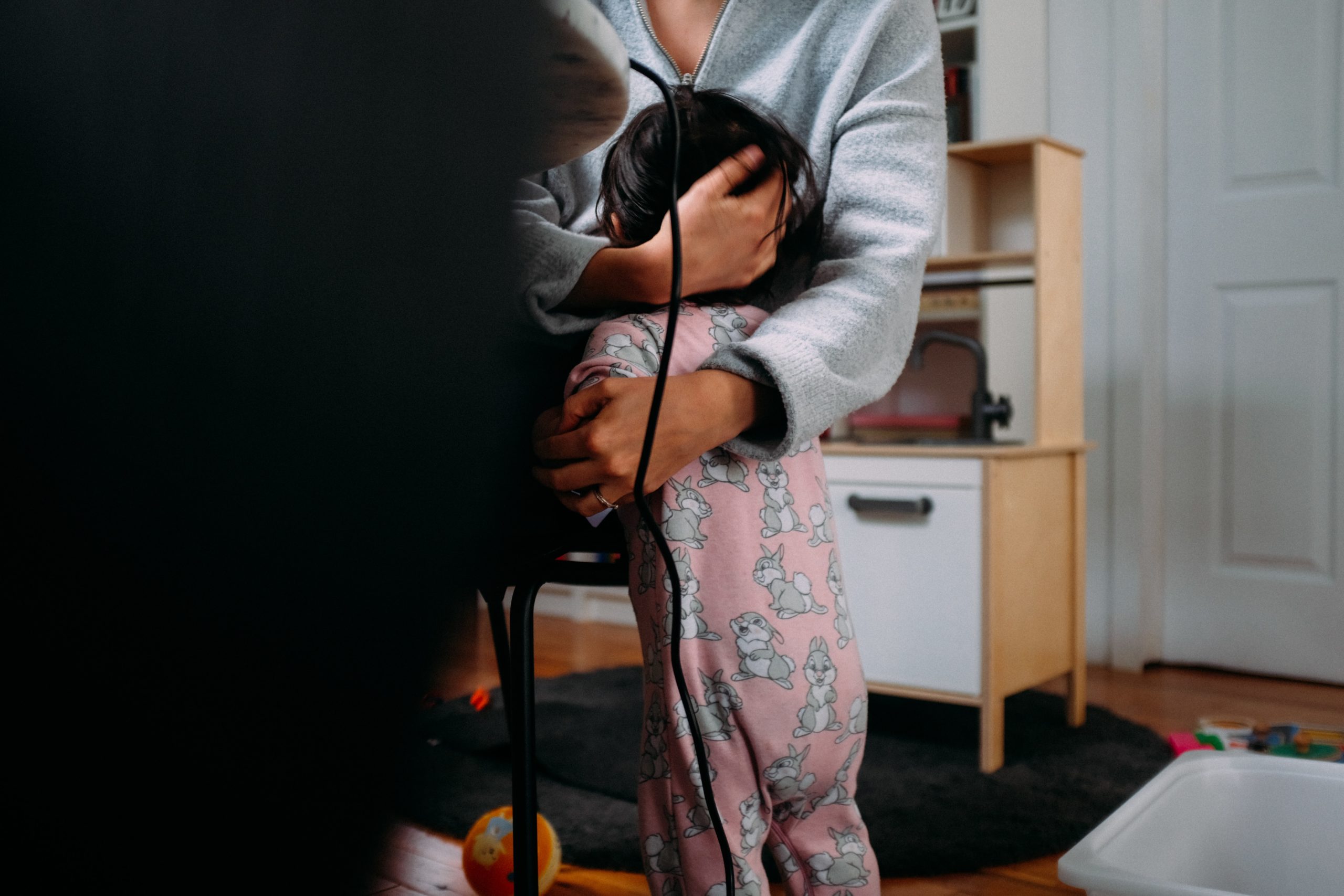
by rossanahead | Nov 27, 2011 | children, Education, woman
By Julie Javellana-Santos
I just attended the alumni homecoming of my high school. It’s been almost 31 years since I left that school. And my classmates and I were nostalgic about how the school looked different, but was somehow still the same.
The chairs in the school auditorium were still the same steel folding chairs we sat on during our graduation, albeit repainted several times over. The drinking fountain where we would satisfy our thirst with lukewarm water on hot days was still there, down to the yellowing tiles and antiquated taps. No mineral water or filtered water for us then—just plain old ‘Nawasa (National Waterworks and Sewerage Authority) juice’ as we called it.
The girls I grew up with were different, though. Many had put on a pound here and there. On the contrary, others had lost weight and were positively scrawny. Still others proudly sported brand new nose jobs.
Through the years, there would be times when I’d bump into someone who said, “I know your face, I just can’t remember your name. But it’s here somewhere.” I guess the popularity of caesarian births and general anesthesia was as much to blame for this forgetfulness as simple old age.
Listening to my classmates criticize the program, though, I guess not much had changed. Many times before, we would gather for a program in that very same auditorium, on those very same chairs, and nitpick over the order of the day. Closing my eyes, I could imagine those same girls in blue and white uniforms, wearing standard black shoes and bored expressions. The voices around me were the same voices back in high school. The criticisms were the same: the program was boring, her skirt was too short, the food not good …
And yet, everything was different.
The classrooms across the yard are now of a different color. Where once a single row of classrooms stood, there’s now a four-storey building. Fences were all around—not just wooden, decorative ones but bars, preventing the wayward child from leaving the premises and strangers from entering the grounds.
Most of all, the girls were no longer young students, but familiar faces sporting monumental eyebags, a couple of pounds, and prominent noses.
Everything had changed, but it seemed to be for the better. The classrooms now had LCD projectors, the school grotto was more orderly and freshly landscaped, the school piano had been refurbished, the auditorium’s comfort rooms had been renovated… all courtesy of the school’s generous alumni. Hopefully, the improvements would not end this year. Hopefully, there would be more next year.
The school may have changed a lot since I was there, but what hasn’t changed was how studying in those rooms helped me become the person that I am. And that is a gift that I would always treasure.
Photo by Nathan Dumlao on Unsplash

by rossanahead | Nov 24, 2011 | children, family, grandparenting, Jing Lejano, parenting, woman
By Jing Lejano
Baby S wasn’t feeling well the other day. She woke up with a fever and slept the entire morning. When I visited her in the afternoon, all cuddled up in bed with a blanket, she held my arms and said, “Lula, sit.” And so, despite the fact that I was in the middle of deadlines, I sat with Baby S and eventually cuddled up to her until she fell asleep.
A couple of hours later, just before sunset, Baby S was feeling much better. She was able to eat, watch a little TV, and play with my son K. But when it was time for bed, she didn’t want to leave our house. She insisted on going upstairs with Lula. And so we climbed up the stairs to my room, she with her milk and her “pampin” (her nappies, which is her security blanket of sorts) and me with my book and a glass of water.
We lay on the bed together, she with her arms around a stuffed toy tiger and me with my arms around her. We were just in bed, enjoying each other’s silent company.
I’ve done this very thing, maybe a million times before—with my daughter E, when her playmate pushed her on the balustrade and had to have a head wound stitched; with my son F, when he had another bout with bronchitis; with my son S, when he was generous enough to give his vacation slot to his younger brother; and with my youngest son K, when he had another one of his scary dreams.
When my daughter E just had Baby S, I remember telling her that I don’t want to do anymore of the taking-care-of-baby stuff. I don’t want to change the diapers. I don’t want to play peek-a-boo. And I don’t want to take care of another sick baby.
Well, guess what? I’ve been doing exactly that. I can’t help it! I’m a mom. I’m a Lula. And I just wouldn’t be true to myself if I don’t cuddle up to dear Baby S. Love is love.
Photo by Liv Bruce on Unsplash

by rossanahead | Nov 12, 2011 | children, family, parenting, Rossana Llenado, woman
By Rossana L. Llenado
Are you a helicopter parent? Do you constantly hover over your children, fussing over their every move? Or are you a free-range parent? Do you allow your children to go off on their own whether it’s meeting up with friends at the mall or doing their schoolwork?
The other week, I attended a seminar at the Center for Family Ministries (CEFAM) at Ateneo de Manila University, one of the Philippines’ leading universities. During the seminar, there was a discussion of the various parenting styles employed by Filipinos. And I tell you that it was definitely an eye-opener.
Through the years, we’ve heard of different terms to describe different parenting styles. We’ve heard of the child-centered non-confrontational parenting, where the child is the center of the universe and the word “no” seems absent from the parents’ vocabulary. There is attachment parenting, where parents attempt to form intimate bonds with their children from birth. Some of the ideas that attachment parents espouse include breastfeeding, baby wearing, and sleeping close to their children or sometimes, co-sleeping. Positive parenting believes in the power of positive reinforcement, saying “do” instead of “don’t” and praising children for good behavior. And then there are those who choose to be uninvolved in their children’s affairs, relegating their parental duties and responsibilities to their own parents or to their kids’ school. Most recently, we met the Tiger Mom, who pushed her children to do their best through a stringent set of rules and schedules.
Basic Framework
I suppose that there are as many parenting styles as there are parents. But really, all these parenting styles originate from three basic frameworks, as described by development psychologist Diana Baumrind. These are the authoritarian, the authoritative, and the permissive.
The authoritarian parent is very familiar to those who grew up in the ‘60s and ‘70s. This is the classic “because I said so” type of parent. He has a strict set of rules that his children must obey no matter what. Rules are set in stone with no room for discussion. And not following those rules would lead to serious consequences, often involving a bit of spanking or some serious grounding.
The authoritarian parent sees the world in black and white. For him, there are no gray areas. Picture the typical patriarch oftentimes played by Ronaldo Valdez in countless Filipino movies and you’ll know what I’m talking about. Control is his main objective. He believes that if his children follow the rules, then they would grow up into good individuals.
The authoritarian parent is often seen as cold and unfeeling.
The authoritative parent is also fond of rules and limits, but he makes sure to explain why those restrictions came about in the first place. Children have more wiggle room because they are given the freedom to make their own choices—just so long as they stay within socially acceptable parameters of good behavior, of course.
But make no mistake about it, the authoritative parent has no qualms about saying the word “no.” However, he tells his children the many reasons behind his “no.” For him, giving a valid explanation will enable his children to understand and respect his decision. He does not want any rebels in his family.
The authoritative parent is perceived as warm toward his children but firm about enforcing rules and structure into their lives.
The permissive parent puts his children’s wants and needs first and foremost. Rules are thrown out the window. What’s important for the permissive parent is for his children to get exactly what they want.
The absence of rules gives children a sense of freedom, which unfortunately is something that they cannot handle at that young age. While the permissive parent is known to be very loving, he is often perceived as not being dependable. That’s because his decisions are not based on his own beliefs, but on what his children want, which can sometimes be erratic.
Most parents use a combination of these three parenting styles. Some are more authoritarian when their kids are young and then go on to be more authoritative as their kids get older.
At dinner the other night, I asked my kids to describe my parenting style. At first, they couldn’t decide. Actually, they sort of got into a big argument about it. One of my kids said that I’m too controlling, the other countered that I actually let them do whatever it is that they like. Another said that I don’t spend enough time with them, which was opposed by another who observed that I spend all my non-working hours with them. It was fun—and enlightening—to see them dissect my every move. Actually, it never occurred to me that they would be so observant about my comings and goings.
When I showed them reference materials from the seminar, they realized I was more authoritative than anything else. They realized too that I always give my reasons when I impose rules, and that seemed to go very well with them.
The Need to Define Ourselves
Whenever a new parenting term comes up, I’ve noticed, it is always met with much nitpicking and sometimes furious debates. We worry that we’re becoming helicopter parents, so we try to loosen our leash a little. We would secretly love to be Tiger Moms, but are afraid of what our neighbors would say.
We like putting labels and defining our styles because we want to put some logic into this whole parenting thing. Raising a happy, healthy, and confident child is probably one of the most difficult jobs in the universe. But of all the jobs we do in this world, it is the one thing that we want to do right.
This essay was first published in Asian Journal.
Photo by Charles Deluvio on Unsplash

by rossanahead | Nov 10, 2011 | children, parenting, woman
By Romelda C. Ascutia
In our neighborhood, there are a couple of small eateries that I regard as lifesavers.
The first one makes my mornings go so much easier. On days when I am pressed for time, I just head over to this old man’s food stall and buy takeout. My favorite is his arroz caldo, the best I’ve tasted so far. I know the secret to its great homey taste. If you get there really early—around 5:30 a.m.—when he has just placed the vat of piping-hot porridge on the display table, you can still spy the huge cow’s bone and the floating bits of beef lard that make it extra flavorful.
I buy different kinds of breakfast, so my family can choose. There’s spaghetti, soup, pancit, and champorado. My kids like the soup, which I serve with scoops of powdered milk stirred in. When they hanker for arroz caldo, I buy it with an extra order of hard-boiled eggs for added protein.
And it’s so affordable that your wallet never becomes anorexic even if you buy every day. No wonder the old man’s nameless eatery is a hit among people who know about it—busy moms like me, employees who bring their breakfast to their office, students who are on a tight budget. It’s important to go to his stall before 7 a.m. or the food will be almost gone. By 9 a.m., his stall is closed for the day.
Lately, after several years, the old man has decided to expand his business. He now serves lunch fare and has installed tables for diners. His move has widened my options as well. I work from the house, and since I am alone from around 9 a.m. I normally just reheat leftovers from last night’s dinner. Now that my favorite eatery serves lunch, a second trip puts more variety to my table.
In the afternoon, I go to another eatery of sorts, an ambulant one that roams our neighborhood. On plastic-covered trays are banana cue, turon, palitaw, lumpiang prito, pancit or spaghetti, itlog ng pugo, and what I always look for, ginataang bilu-bilo that the vendor alternates with ginataang mais or ginataang monggo every so often. The roving food stall saves me cooking time and effort especially when I have tight deadlines, and gives me a welcome break from work. When the children come home, their afternoon snack is laid out on the table. Another day saved!
Photo by Robin Stickel on Unsplash
by rossanahead | Nov 6, 2011 | children, home, parenting, woman
By Julie Javellana-Santos
For me, the Christmas season officially began when I found myself waking up at dawn and groping around for a blanket. The mornings had suddenly grown cooler. Where before I kicked off all covers, it was all I could do to snuggle into a comforter a few days ago. Needless to say, it took a monumental amount of will to get up and start getting dressed for the day.
For my sisters, the Christmas season began when the malls started playing Christmas carols last September. My sisters call me “Scrooge” because among all of us (we are five), I do not look at the holiday season as vacation time, but rather as a “stressful” time.
When the word Christmas is mentioned, images of endless traffic jams and malls packed with shoppers immediately enter my mind. This particularly affects me because of the many gifts I have to get. Since I was a little girl, my parents had Christmas gifts for everyone around them—the household help, our numerous aunts, uncles, and cousins in the province, and so on and so forth, and this is a tradition I want my own daughters to carry on.
Having been in media most of my life, I always found myself wrapping presents up to the last minute as vacation leave time could not be obtained to get those gifts and then wrap them. Being in media is stressful in itself as there are no holidays, no days off. One is always on call. Perhaps that is why the idea of Christmas as a time to enjoy is all but alien to me.
When I was a freelancer and master of my own time, I could do all this and the decorating as well. I had all the time in the world to scout for new decorations, and to refurbish my old stuff.
But perhaps it is time to pass on that task to my daughters. So this year I will leave them to do the decorating and the figuring out which of our Christmas decorations need to be changed and which do not. I will also leave them to do the shopping for gifts, the wrapping, and the distributing, all with the objective of giving me more time to enjoy myself this season–for a change.
Now if only something could be done about the Christmas traffic . . .
by rossanahead | Oct 31, 2011 | children, environment, Gina Abuyuan, parenting
By Regina Abuyuan
“What’s worse than someone raping your daughter?” read an award-winning poster for an awareness campaign back in the ‘90s. “Someone raping your son.”
I think either is worst, period. Sexual assault, bullying, seemingly harmless pranks that end up scarring one’s emotional growth forever, illness—the list of motherly fears go on.
Friends and family like to say that I’m braver (let’s say more foolhardy) than most, but it’s the opposite when it comes to my kids. With them, I’m hopelessly praning. I wiped down their toys with alcohol when they were babies, fearing they would contract some deadly disease when they put them in their mouths. I stock up on the Neosporin, fever patches, and make them drink wheatgrass, even if I know their intake of fruits and vegetables is enough (I hope!). I’m that kind of mom.
I also, have of late, begun teaching my teenage daughter more practical ways to stay safe. Some of these were borne out of my own “kapraningan” when I was young—and were validated later on via viral emails and warnings, as everyone grew more aware of how to keep out of danger or compromising circumstances. Here they are:
The two way mirror. Restrooms, dressing rooms, and yes, motel bedrooms have them. Not wanting to go down in history with a Betamax scandal tape to my name, I learned to search for hidden cameras or places where they could be hidden. Any strange protusions, wires, unevenly installed areas of an otherwise flawless surface—those were subject to scrutiny, knocking (if it sounded hollow, it was covered), and rearrangement (lamps and vases, transferred to the floor).
Mirrors were particularly tricky. A trick I learned from a policeman was to put your finger against the surface. If there was no gap between the surface and your finger, it was likely to be a two-way mirror (I can still picture myself doing this in the restroom of Larry’s Bar in Makati). Another trick was to check if the mirror was installed within the wall, and not merely mounted on it. If it was, it was a sign that it was an observation mirror.
Of course, a pervert need only to clear the silver backing of a small area of a mirror to get a view, and there are more ways to tell a one way mirror from not (read here), but so far I’ve been safe. Phew.
Walking on the traffic side of a sidewalk. Never walk on the outer side of a curb—especially if you have long hair, a bag swinging from a long shoulder strap, or loose articles of clothing hanging from your body (a jacket tied around your waist, a cuff with tassels, a necktie). Abductors can easily swing by and drag you into their vehicles, mostly vans. (I almost had this happen to me in the Katipunan area. I quickly stepped back and ran back inside the Ateneo campus grounds.) In the same vein, don’t use your mobile phone, iPod, or gadgets while walking in public places. A motorcycle snatcher can easily breeze by and grab your valuables.
The open drinks. Never accept open drinks when you’re out partying or hitting the clubs. Let’s be real. Your daughter will eventually enter this scene, even if they claim they never will, and forewarned is forearmed. I tell my daughter that, when that time comes, to buy her own drinks, and if she accepts one from anyone, to make sure she sees it being opened in front of her by the bartender. Sedatives or date rape drugs can easily be dropped in already-open drinks. Not good.
Don’t be afraid to scream. Teenagers value their image and poise. But in times of uncertainty and danger, they have to learn to scream—scream their lungs out. Troublemakers don’t like attention, and they’re sure to scurry away if a victim creates a major fuss. Their voice is their best weapon in times of distress. Reassure your children it’s okay to let it rip, and the “embarrassment” far outweighs their safety.
Be wary of men who approach you in malls. During the launch of Called to Rescue, a movement to halt trafficking, Cyndi Romaine informed the audience that a popular modus operandi of traffickers was to approach a group of teenagers in public places, usually malls. They would choose the average-looking girl—not the prettiest, not the homeliest—to them, it was a safer gamble. That particular girl would probably have the self-esteem easier to manipulate and be easier to “sell” to clients. Whether or not the motive is to traffic, warn your children—girls and boys—to stay away from strangers in malls. Our parents warned us about this then and it’s worked…so might as well warn our kids now.




